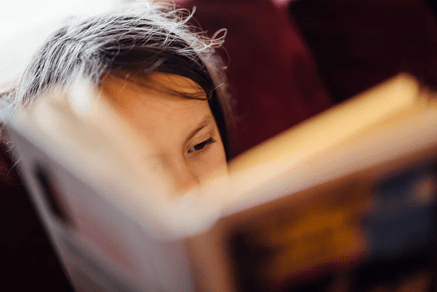New Year, Same Science: 3 Goals for Improved Literacy Instruction in 2022
We’ve conquered more than one month of 2022: a remarkable feat for any teacher or caregiver working alongside a child in their early reading journey. With a pandemic, teacher shortages, and districtwide shifts in curricula, the age-old simplicity of cozying up with a book is more complicated than ever. To simplify the headlines, we outline 3 national goals for literacy instruction based on the science of reading, with timely insights from researchers and educational leaders in the field.

1. Improve teacher training in the science of reading - for real
New programs in North Carolina, Missouri, Alaska, and other states are retraining entire elementary schools in explicit and systematic phonics instruction, phonemic awareness, and the science of the literate brain. Yet these efforts will be insufficient, writes reading researcher Molly Ness, if teacher training programs neglect the latest research on the science of reading. According to a 2020 review of elementary teacher training programs by the National Council on Teacher Quality, only 53 percent of those programs provided sufficient coverage of essential early reading components. Retraining teachers is a time-consuming and costly endeavor, which is why it’s crucial for higher education programs to train future teachers effectively the first time around. In addition to systematic phonics, science-driven teacher training should cover the linguistic structure of English and the evaluation of foundational literacy skills through various measures.
2. Adopt instructional materials that align with the science of reading.
New teachers trained in the science of reading often enter schools using outdated instructional materials, such as the Units of Study from the Teachers College Reading and Writing Project. The resulting disconnect between teachers’ training and the materials they’re given is both disorienting and frustrating. Particularly for students learning English and/or students with learning disabilities, these older curricula fall short in the science of reading and may not provide sufficient text complexity in students’ first languages.
As high-impact individuals with the power to change curricula, district leaders can introduce research-supported reading curricula in their schools: among them, the Simple View of Reading. The Simple View of Reading states that students need to be able to decode, or read each word accurately and fluently, and comprehend the meaning of texts being read before progressing to higher-level reading skills.

3. Understand literacy as a social justice issue.
To best support each reader in a classroom, we must treat literacy as a social justice issue with the urgency it deserves. Poor reading skills are associated with increased risk for school dropout, mental health challenges, and barriers to employment and higher education, among other outcomes. Unfortunately, major reading gaps are visible in national data: the 2019 National Assessment of Educational Performance (NAEP) indicated that only 35% of all fourth-grade students performed at or above proficiency levels in reading; students of color, students with dyslexia, and other socioeconomic challenges are projected to perform at even lower percentages, especially since the onset of COVID-19. It’s critical to remember that students are not simply data points, just as reading is not a one-size-fits-all formula: there are humans behind these numbers, with complicated personal histories that intertwine with their reading journeys. Researchers maintain the importance of teaching students to decode words before moving onto more complex skills. When students crack that code, they’re more likely to continue reading and encountering more words, more places, and more narratives that both affirm and challenge their own.

Take-Aways:
- Popular coverage of U.S. students’ national reading scores and associated challenges bring the science of reading into mainstream discussion, particularly as we navigate the educational challenges of 2022.
- Insights from reading researchers illuminate 3 main goals to improve literacy instruction in 2022 and beyond:
- Improve teacher training.
- Adopt reading curricula that align with the science of reading.
- Frame literacy as a social justice issue with the urgency and care it deserves.
Start Teaching Reading for Free Now!
Access Level 1’s four interactive stories and the accompanying supplemental resources to teach elementary students how to read. No credit card is needed. Join the 42,635 teachers and students using our reading program.
